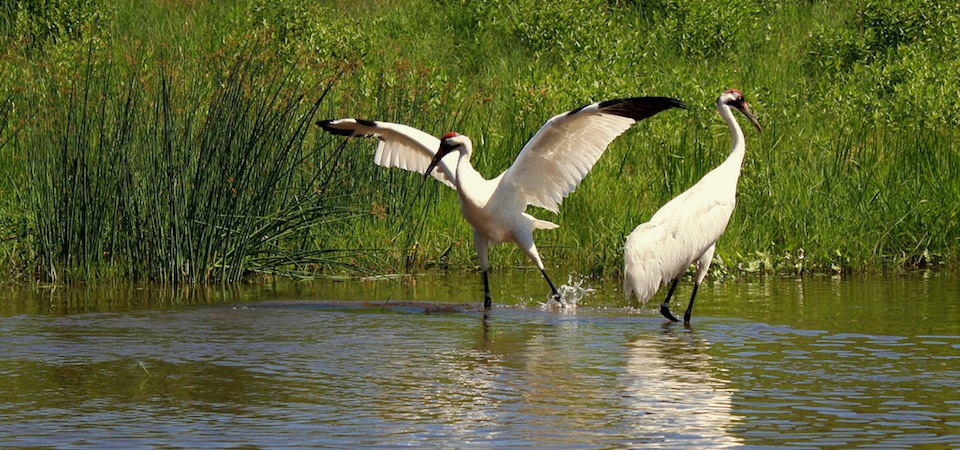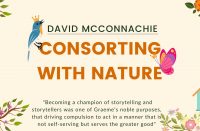2013 marked an important anniversary for the International Crane Foundation. Over the past 40 years, its dedicated efforts to protect cranes and the habitats they share with other wildlife have been rewarded with remarkable results and have made ICF one of the world’s foremost conservation organizations.
2013 marked an important anniversary for the International Crane Foundation. Over the past 40 years, its dedicated efforts to protect cranes and the habitats they share with other wildlife have been rewarded with remarkable results and have made ICF one of the world’s foremost conservation organizations.
ICF was founded in 1973 by two Cornell students: Canadian-born George Archibald and the now-late Ronald Sauey. Building an international non-profit organization from scratch is no easy task; the first five years of work were accomplished without a pay cheque. However the level of passion demonstrated by ICF’s co-founders and the others who have furthered its mission over the years is understandable when you consider the significance and fragility of the world’s 15 crane species.
With stilt-like legs, knobbly joints, sinuous neck, bald-patched head and imposing size, a crane is prehistoric bird-beast and elegant marsh-strider rolled into one. We humans admire cranes for their complex vocalizations and extensive migrations. They even hold special significance for many cultures, as in Vietnam where Sarus Cranes are believed to carry souls to heaven, and are also useful to ecologists as large, conspicuous indicators of ecosystem health.
Venerated as they are, cranes are also suffering under the pressure of human impacts. Habitat degradation, hunting, illegal trade and disturbance have driven down populations such that six out of the 15 crane species are now considered endangered and another five are vulnerable.
The plight of the Whooping Crane in North America has been especially poignant to ICF co-founder Archibald. Ever since he heard a radio dramatization about the species in his childhood, he’s considered himself “totally imprinted on Whooping Cranes.”
The ICF’s work with Whooping Cranes has become one of its best-known and greatest success stories. In the 1940s, there were fewer than 25 of these birds left in existence. Now, thanks to ICF and its partners, there are around 600, with roughly 445 of those living in the wild. Conservation efforts have included captive breeding, habitat monitoring and, most charmingly, dancing.
Archibald caught the attention of a female crane named Tex – and the media – when he performed a courtship dance to get the human-imprinted bird in the mood for artificial insemination. “It was boring being out in the middle of a field with a bird from dawn until dusk,” he recounts. “I would go out there, run around with her and jump and throw things in the air four times a day. Then I would go back to my work and she would go back to preening.” Fortunately the boredom paid off; Tex produced a viable offspring named Gee Whiz. As for Archibald, he made “The Tonight Show Starring Johnny Carson” in 1982. Now he reflects on the story of him and Tex as a metaphor for “looking at the impossible and turning it into something wonderful.”
The captive breeding program at ICF headquarters in Baraboo continues, with the emphasis still on Whooping Cranes. The goal is to carefully hone a method for breeding Whoopers that can serve as a model for recovering other imperilled species worldwide. ICF is also a research hub for veterinary medicine and ecosystem restoration and home to a library that serves crane researchers internationally. The facility maintains a flock of over 100 cranes representing all 15 species, which visitors are welcome to enjoy from April to October.
ICF also collaborates with partners around the world, supporting projects to reintroduce cranes and heal habitats as well as educate people and work with them to find solutions to local conservation issues. One species that has been a major focus is the critically endangered Siberian Crane. ICF helped establish a captive breeding program for these birds near Moscow as well as a Memorandum of Understanding concerning Conservation Measures for the Siberian Crane, which was signed by all 11 nations in the species’ former range. Raising awareness is an important part of conserving this bird along its migratory flyways, where hunting poses a major threat.
Far from resting on its laurels, ICF places great emphasis on empowering conservation leaders of tomorrow. Among its opportunities for interns and volunteers are placements in education, communications, biology, ecology and avian medicine. After all, history has shown that a couple of students and one big dream is all you need to make a world of difference.
Learn more about ICF and whooping crane conservation:
- BirdWatching magazine’s interview with George Archibald
- ICF’s YouTube channel
- Operation Migration: using ultralight aircraft to guide captive-reared birds on migration
- Whooping Crane conservation in Canada
Ellen Jakubowski is a former A\J editorial intern with a BSc in Biology from the University of Guelph and a science communication diploma from Laurentian University. She works as an interpreter at the Cambridge Butterfly Conservatory and blogs about animals in The Wild Side.













